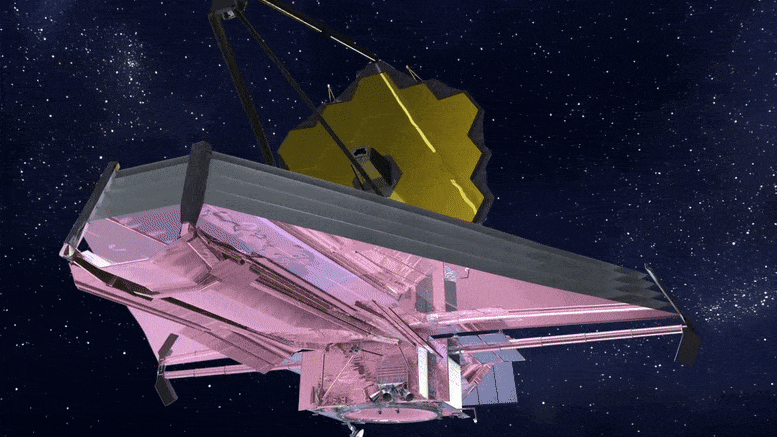
It has been a long journey for the James Webb Space Telescope, filled with setbacks and obstacles to overcome. Some consider its start date all the way back in 1989 when a Next Generation Space Telescope Workshop began looking into a follow-up to the Hubble Space Telescope. However, things kicked into a higher gear 26 years ago, in 1996, with a space telescope design proposal from an 18-member committee led by astronomer Alan Dressler. Construction of Webb started in 2004.
Webb was originally expected to launch in 2007, but a series of delays pushed things back until December 25, 2021, when it launched successfully on an Ariane 5 rocket from Europe’s Spaceport in French Guiana. Days later it began sunshield deployment, which was completed successfully on January 4, 2022. The next day it deployed its secondary mirror, and then on January 8, when its gold-coated, 21-foot primary mirror was fully deployed, Webb had concluded all major spacecraft deployments.
After that, it began the long process of mirror alignment, powered on its instruments, kicked off multi-instrument alignment, and moved on to commissioning the observatory’s four powerful science instruments. Capping off these 6 months of deploying, commissioning, and testing, NASA announced today (July 11) that it is now fully ready for science. Tomorrow ( July 12) NASA will release the first full-color Webb images.
Finally, the months-long process of preparing NASA’s James Webb Space Telescope for science is now complete. All of the seventeen ways or ‘modes’ to operate Webb’s scientific instruments have now been tested and certified, which means that Webb has completed its commissioning activities and is ready to begin full scientific operations.
Each of Webb’s four major scientific instruments has multiple modes of operation, utilizing customized lenses, filters, prisms, and specialized machinery that needed to be individually tested, calibrated, and ultimately verified in their operational configuration in space before beginning to capture precise scientific observations of the universe. The last of all seventeen instrument modes to be commissioned was NIRCam’s coronagraph capability, which works to mostly block incoming starlight by inserting a mask in front of a target star, suppressing the target star’s relatively bright light to increase contrast to enable the detection of fainter nearby companions such as exoplanets. NIRCam, or the Near-Infrared Camera, is equipped with five coronagraphic masks — three round masks and two bar-shaped masks — that suppress starlight under different conditions of contrast and separation between the star and its companions.
In addition to capturing detailed imagery of the universe, NIRCam is the observatory’s main wavefront sensor that is used to fine-tune the telescope’s optics. It has this double duty by design due to having a comparatively wide field of view and possessing a suite of special internal optics that enable it to take out-of-focus images of stars and even take ‘selfie’ images of the primary mirror itself. The team was able to start aligning the telescope’s optics even while the observatory was still cooling down, because of NIRCam’s ability to safely operate at higher-than-normal, but still cryogenic, operating temperatures.
“From the moment we first took images with NIRCam to start the telescope alignment process to the checkout of coronagraphy at the end of commissioning, NIRCam has performed flawlessly. Observers are going to be very pleased with the data they receive, and I am extremely happy with how 20 years of work by my team are now realized in amazing performance,” said Marcia Rieke, principal investigator for the NIRCam instrument and regents professor of astronomy, University of Arizona.
Webb’s commissioning process culminates tomorrow, July 12, with the release of the telescope’s first full-color images and spectroscopic data, and the official beginning of its science mission.
Never miss a breakthrough: Join the SciTechDaily newsletter.